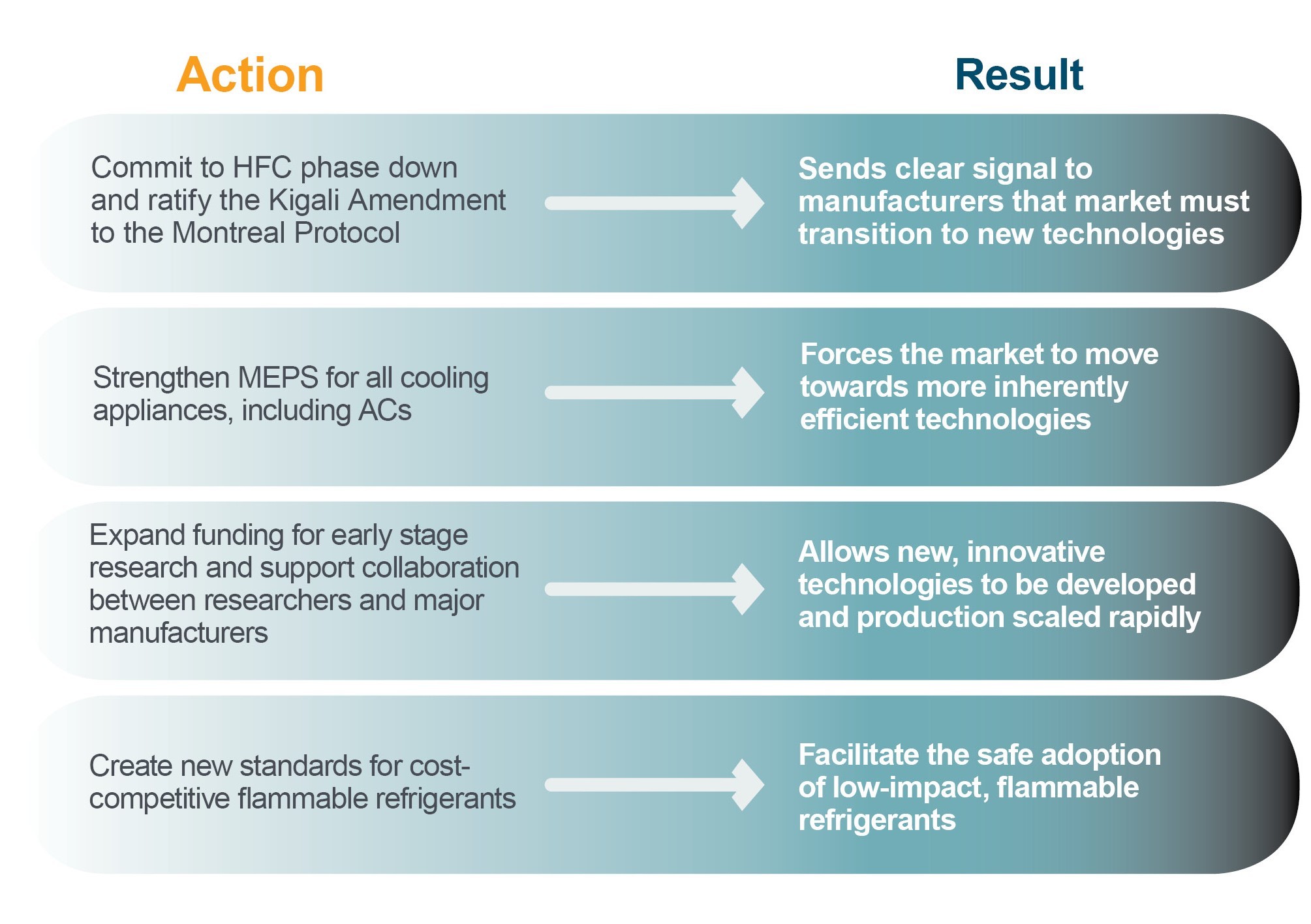Next Generation Residential Air Conditioners: Technologies, Barriers to Market, and Policy Options
Shifting to a new generation of high-efficiency air conditioners using low global warming potential refrigerants could reduce global greenhouse gas emissions by as much as 98 Gt of CO₂e by 2050.
A new paper by CLASP team member Colin Taylor, “Next Generation Residential Air Conditioners: Technologies, Barriers to Market, and Policy Options,” makes the case that strengthening policy, increasing research funding, and establishing productive links between academia and industry will be crucial in driving markets towards innovative, highly efficient air conditioner technologies.

Improving air conditioner (AC) energy efficiency could dramatically reduce peak electricity demand in many parts of the world, which will in turn lessen the need for new electricity generation facilities. The cooling industry and academic researchers are developing a new generation of AC technologies for just this purpose. These new technologies range from propane-based ACs and advanced vapor compression technologies that use refrigerants such as hydrofluoroolefins (HFOs) or CO₂, to technologies that do not use vapor compression at all, such as solid-state cooling, and electro-mechanical cooling. However, these next generation AC technologies face numerous technical, economic, and regulatory barriers to their widespread uptake.
The paper examines the status of emerging residential AC technologies, identifies major barriers preventing large-scale adoption of these technologies, and reviews policy options to overcome these barriers and transform the AC market.
A comprehensive set of policies can fill institutional gaps and bring the next generation of air conditioners into the market. Ratification of the Kigali Amendment to the Montreal Protocol, whereby countries agree to phase out hydrofluorocarbons (HFCs), by every country would clearly signal manufacturers to shift production to new technologies. Taxing HFCs and strengthening MEPS where they already exist, or establishing ambitious MEPS in economies that have yet to implement efficiency standards, will further encourage innovation in AC technology.
While policy can grow demand for efficient products, increasing research funding and facilitating meaningful collaboration between startups and universities conducting space cooling research and manufacturers is also necessary to enable scaling up production of innovative ACs. In particular, universities and startups in the U.S. need to establish these links with major AC manufacturers in Asia.
“Next Generation Residential Air Conditioners: Technologies, Barriers to Market and Policy Options” is published by the American Council for an Energy-Efficient Economy (ACEEE). Read the full paper here.
CLASP supports governments to determine and implement the most ambitious and cost-effective policy solutions, drawing on global best practice and leading technical expertise. Learn more about our policy and market transformation work by visiting clasp.ngo/what-we-do/policy-analysis.









